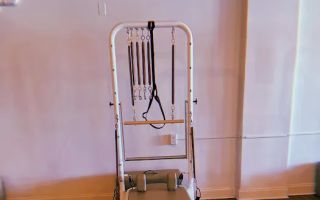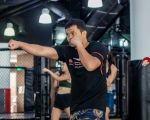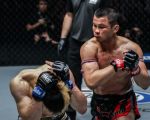Strength Training for Muay Thai: Enhancing Power and Endurance
- 1. The Importance of Strength Training for Muay Thai
- 2. Key Benefits of Strength Training for Muay Thai Fighters
- 3. Best Strength Training Exercises for Muay Thai
- 4. Creating a Strength Training Routine for Muay Thai
- 5. Nutrition Tips for Muay Thai Strength Training
- 6. Real-Life Success Stories: Muay Thai Fighters and Strength Training
- 7. Conclusion: Building Strength for Muay Thai Success
1. The Importance of Strength Training for Muay Thai
Muay Thai is known for its power, precision, and endurance. While technique and skill are vital in the ring, strength training plays an equally crucial role in improving overall performance. A fighter's strength impacts everything from their striking power to their ability to absorb hits, making it a key component in their training regimen.
Strength training for Muay Thai is about more than just bulking up; it's about building functional power that translates directly into improved fighting abilities. By increasing muscle strength, Muay Thai fighters can enhance their speed, improve their balance, and increase their explosiveness during strikes and clinches. In this article, we will explore the significance of strength training for Muay Thai fighters and share some of the most effective exercises and routines to improve performance in the ring.
2. Key Benefits of Strength Training for Muay Thai Fighters
Strength training offers numerous benefits for Muay Thai fighters, both in terms of improving fight performance and overall physical health. Here are some of the most significant advantages:
- Increased Striking Power: Muay Thai relies heavily on powerful strikes, and strength training helps develop the muscles involved in punches, kicks, elbows, and knees. By building strength in key muscle groups, fighters can hit harder and deliver more impactful strikes.
- Improved Endurance: Strength training helps increase muscular endurance, which is crucial during intense Muay Thai rounds. With better endurance, fighters can maintain power and technique throughout the entire fight without succumbing to fatigue.
- Enhanced Balance and Stability: Strength exercises help improve a fighter's balance, which is important for both offensive and defensive techniques. Stronger muscles help fighters maintain stable positions during clinches, avoid being thrown, and land strikes with better positioning.
- Better Injury Prevention: Strengthening muscles and joints helps protect against injuries by improving the body's overall strength and stability. This is particularly crucial in Muay Thai, where fighters are at high risk of overuse injuries due to repetitive movements.
Incorporating strength training into a Muay Thai fighter's routine leads to greater overall performance, fewer injuries, and improved physical fitness, all of which contribute to success in the ring.
3. Best Strength Training Exercises for Muay Thai
To effectively enhance strength for Muay Thai, focus on exercises that improve the core muscles, legs, arms, and shoulders, as these areas play a critical role in a fighter's performance. Here are some of the best exercises for Muay Thai strength training:
- Squats: Squats are fundamental for building lower body strength, which is essential for powerful kicks, knees, and stability during clinches. Both bodyweight squats and weighted squats can be incorporated to target the quads, glutes, and hamstrings.
- Deadlifts: Deadlifts are one of the most effective exercises for developing overall strength, particularly in the posterior chain (lower back, hamstrings, and glutes). This exercise helps improve posture, balance, and the ability to generate power through the hips.
- Push-Ups: Push-ups are a great bodyweight exercise for building upper body strength, particularly in the chest, shoulders, and arms. They also enhance core stability, which is important for maintaining balance during Muay Thai techniques.
- Pull-Ups: Pull-ups target the back and shoulders, which are essential for clinching, controlling your opponent, and performing elbow strikes. They also help improve grip strength, crucial for securing holds and maintaining control.
- Medicine Ball Slams: Medicine ball slams help develop explosive power, which translates directly into fast and powerful strikes. This exercise works the entire body, improving coordination and reaction time.
- Kettlebell Swings: Kettlebell swings are excellent for building hip strength, core stability, and cardiovascular endurance. They are particularly beneficial for explosive movements like jumping, kicking, and delivering powerful knees.
By regularly incorporating these exercises into your training, you'll build the strength and power necessary for Muay Thai, improving your overall performance in the ring.
4. Creating a Strength Training Routine for Muay Thai
To make the most of strength training for Muay Thai, it’s important to create a routine that targets the necessary muscle groups while also allowing for sufficient recovery. Here’s an example of how to structure your weekly training:
- Day 1 – Lower Body Strength: Focus on exercises like squats, deadlifts, lunges, and kettlebell swings to target the quads, hamstrings, glutes, and core. This will help build the foundation for powerful kicks and knee strikes.
- Day 2 – Upper Body Strength: Include exercises such as push-ups, pull-ups, and medicine ball slams to build strength in the arms, shoulders, and back. These muscles are essential for punching, clinching, and striking with elbows and knees.
- Day 3 – Core and Explosiveness: Train the core with exercises like planks, Russian twists, and cable wood chops to improve balance and stability. Incorporate explosive movements such as plyometrics, box jumps, and sprints to enhance power.
- Day 4 – Active Recovery: Engage in low-intensity activities such as yoga, swimming, or light cardio to promote recovery and flexibility. This day helps reduce the risk of overtraining and injury.
- Day 5 – Full-Body Strength: Combine exercises that target multiple muscle groups, such as deadlifts, kettlebell swings, and burpees. This will help improve overall strength and endurance.
Make sure to alternate between strength training and Muay Thai technique practice to strike the right balance and avoid overloading any single muscle group. Consistency is key in building strength while still maintaining the technical aspects of your Muay Thai skills.
5. Nutrition Tips for Muay Thai Strength Training
Strength training for Muay Thai requires proper nutrition to fuel your body, aid recovery, and optimize performance. Here are some nutrition tips to support your strength training:
- Prioritize Protein: Protein is essential for muscle growth and repair. Include lean sources of protein such as chicken, turkey, fish, eggs, and plant-based options like tofu and legumes.
- Carbohydrates for Energy: Carbohydrates are your body's primary source of energy. Opt for whole grains, fruits, and vegetables to provide sustained energy throughout your workouts.
- Healthy Fats: Incorporate healthy fats from sources like avocados, nuts, seeds, and olive oil. These fats support overall health and help with joint lubrication, which is vital for Muay Thai practitioners.
- Stay Hydrated: Drinking plenty of water is crucial for maintaining performance and preventing dehydration, especially during intense training sessions.
By following a balanced diet, you'll provide your body with the necessary nutrients to build strength and perform at your best during Muay Thai training.
6. Real-Life Success Stories: Muay Thai Fighters and Strength Training
Many Muay Thai fighters have credited strength training for their success in the ring. Take the example of Saenchai, one of the most famous Muay Thai fighters, who incorporates strength training into his routine to enhance his explosiveness and endurance. By focusing on functional strength, Saenchai is able to execute high-powered kicks and maintain the stamina required for long fights.
Similarly, fighters like Buakaw Banchamek have developed a strength training regimen that combines core stability, explosiveness, and power to improve their fight performance. These examples show that strength training is essential for becoming a well-rounded fighter who can excel in both offensive and defensive tactics.
7. Conclusion: Building Strength for Muay Thai Success
Strength training for Muay Thai is a vital part of becoming a more powerful and effective fighter. By focusing on building strength, improving endurance, and supporting recovery through proper nutrition, you can elevate your Muay Thai game and perform at your peak. Whether you’re preparing for competition or just looking to improve your skills, strength training will help you achieve your goals and set you apart from the competition.
If you're looking for expert advice or the best tools to enhance your Muay Thai training, visit Humble Challenger for top-rated fitness equipment and resources!

































